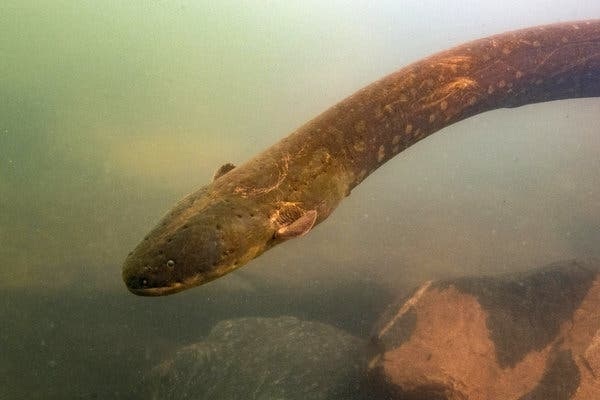
Updated on Sept 14, 9.02 AM
- Scientists have identified two new electric eel species in the Amazon basin, and surprisingly one of them can put out a zap that’s stronger than any other animal we know about.
- The name of this supercharged species is Electrophorus voltai, and it can discharge 860 V of electricity in a single shock, some way ahead of the 650 V shock that electric eels are normally associated with.
- As for the other new species identified by the latest research, it’s called E. varii. Though it can ‘only’ muster a maximum of 572 V with its shocks, these two animals open up a whole new way of thinking about the electric eel.
- Researchers at the Smithsonian Museum of Natural History revealed that electric eels in the Amazon basin belong to three species. The two new species identified are Electrophorus voltai and Electrophorus varii, which is named after the late Smithsonian fish expert Richard Vari.
- It was previously believed that there was just one species of electric eel, E. electricus, first discovered more than 250 years ago. These new findings from the Amazon basin emphasise the diversity of life within it – much of it still left for us to discover – and the importance of preserving that life.
About Electric eels
- Electric eels, which are actually fish rather than eels, use their specialised nervous systems to produce voltage, deploying it to sense their surroundings and to neutralise prey.
- The electric eel actually inspired the invention of the first battery back in 1799, and these new findings might help us to understand more about how these fish generate high-voltage electricity.


